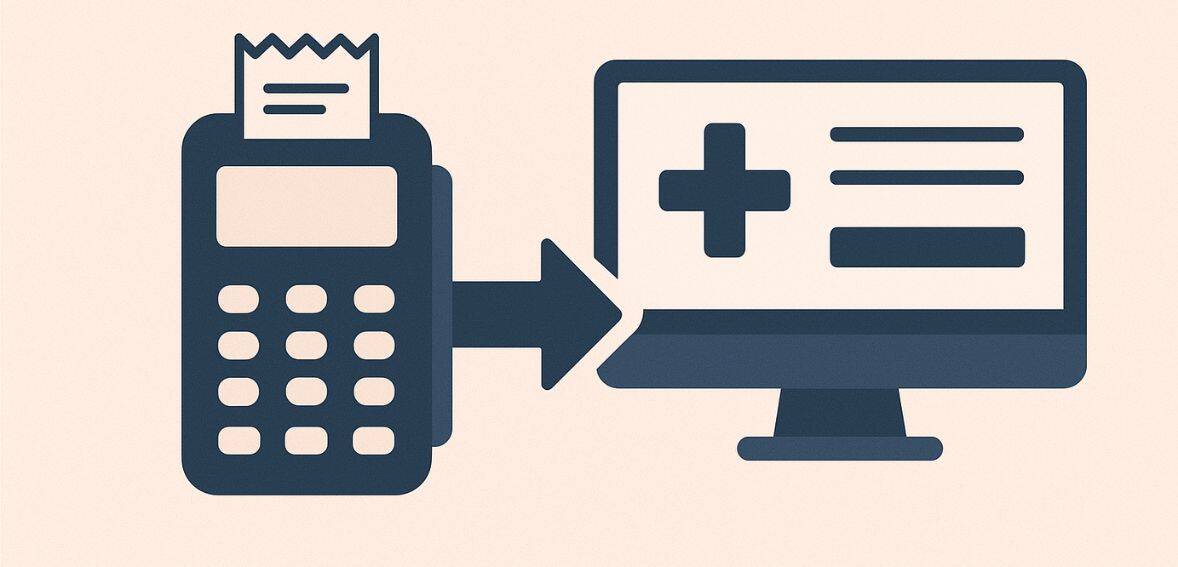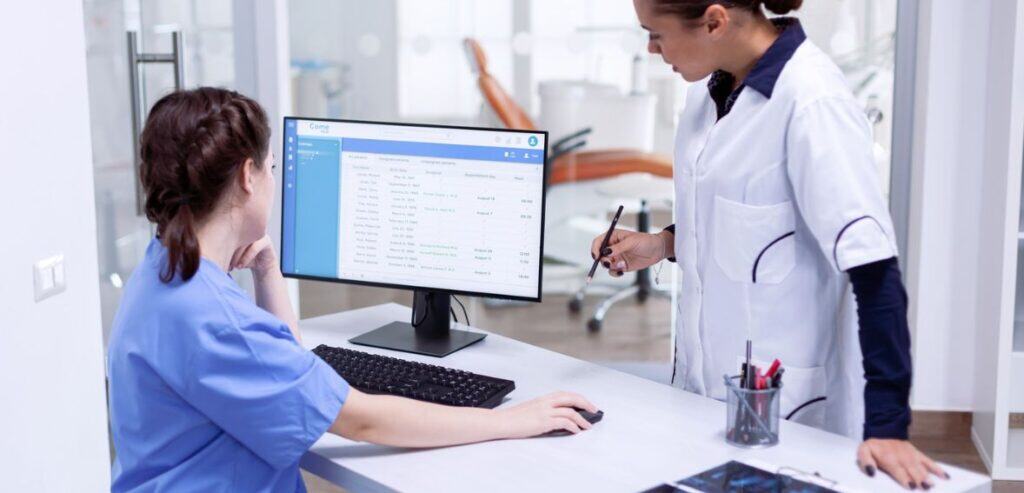
By alphacardprocess September 26, 2025
Nowadays, managing the complex ecosystem that surrounds the delivery of healthcare is just as important as treating patients. In addition to managing administrative responsibilities, navigating compliance, and guaranteeing seamless financial operations, providers are expected to produce exceptional results.
One of the most important and frequently challenging aspects of practice management is collecting payments efficiently. Integrated payment solutions have emerged as a game-changing strategy, allowing providers to streamline financial workflows, reduce errors, and enhance the patient experience—all while keeping administrative burdens to a minimum.
Traditional systems that divide clinical and financial operations frequently result in inefficiencies that cause patient dissatisfaction, staff burnout, and billing errors. Direct payment solution integration into electronic medical record (EMR) or electronic health record (EHR) systems has become a game-changing strategy.
By integrating financial workflows with patient care data, providers can lower administrative burden and enhance the patient experience. Instead of viewing payments as a separate burden, integration allows them to become part of a seamless journey that benefits patients, staff, and the organization as a whole.
The Evolution of Healthcare Payments

Healthcare payments were dispersed and heavily reliant on paper for many years. Staff manually entered charges, patients received bills weeks after appointments, and reconciliation frequently required pursuing unpaid balances. These inefficiencies damaged the patient-provider relationship in addition to delaying revenue.
EHR and EMR systems became the foundation of clinical operations as digital health technologies advanced, but payments were frequently neglected. Practices made investments in third-party processors, online portals, or stand-alone point-of-sale systems, all of which necessitate manual reconciliation and duplicate data entry. The emergence of integrated payment solutions is a logical progression.
Integrated payments seek to integrate financial transactions with medical records, much like EHR systems did by combining clinical notes, lab results, and patient histories into a single, easily accessible platform. The end effect is a system in which the financial and clinical elements of healthcare no longer operate in silos, but in harmony, enabling better efficiency and more transparency for all stakeholders.
Why Integration Matters
Payment has a direct impact on the patient experience and is not just about revenue. When it comes to financial interactions, patients are expecting healthcare to be simple, transparent, and convenient, much like retail or hospitality. Patients might experience unclear invoices, irregular payment methods, or statement delays in the absence of integration.
Managing these inefficiencies results in lost time, increased error rates, and increased stress for the employees. By establishing a single source of truth, integration addresses these issues. The payment system instantly updates when a charge is added to a patient’s chart. The payment and the record are automatically reconciled upon payment.
Duplicate entry is removed, billing disputes are decreased, and providers are free to concentrate more on patient care and less on paperwork because of this smooth flow.
Reducing Human Error in Billing
One of the most frustrating problems in healthcare administration is manual billing errors. A missed charge, a mistyped code, or a misplaced decimal can easily lead to patient disputes or denied claims. The probability of these errors is greatly reduced when payment systems are directly integrated into EHR/EMR platforms.
There is less opportunity for manual error because charges are automatically transferred from clinical documentation into the billing record. Revenue is safeguarded, and patients are also spared the anxiety of receiving updated statements weeks later.
Integration reduces the expensive cycle of errors, corrections, and resubmissions that frequently afflict healthcare billing offices by tying clinical documentation and financial accuracy together.
Streamlining Administrative Workflows

Reducing administrative workloads is one of integration’s most obvious advantages. Employees no longer have to manually reconcile transactions or manage several systems. When a patient pays a copay at check-in, for example, the transaction is immediately entered into the electronic health record (EHR), compared to the scheduled visit, and automatically reconciled at the end of the day.
As practices expand, this efficiency increases. Faster closeouts and fewer errors benefit large health systems that handle thousands of transactions every day, while small practices free up time to concentrate on patient interaction rather than paperwork. Additionally, integration offers administrators real-time visibility into accounts receivable, eliminating the need to extract data from various sources and providing them with precise financial health snapshots.
Time Savings for Frontline Staff
As they balance patient intake, insurance verification, and financial reconciliation, front desk and billing staff are frequently the unsung heroes of healthcare operations. Repetitive data entry and cross-checking take up a large portion of their day in the absence of integrated systems.
By eliminating these duplications, integration frees up staff members’ time to concentrate on deep patient interactions. For example, employees can handle everything from a single screen instead of hopping between an EHR and a payment terminal.
These minutes saved over the course of weeks and months add up to hours, which could be used for proactive communication, patient satisfaction, or handling complicated cases that need human intervention. Essentially, integration gives employees the gift of time rather than just streamlining tasks.
Enhancing Patient Experience
Patients frequently experience anxiety related to both their care and the associated financial responsibilities. Integration provides convenience and clarity, which reduces this stress. For instance, the same portal that patients use to access lab results or appointment reminders can also be used to view their outstanding balances.
In addition to standard credit card processing, digital wallets or contactless methods can be provided, and payment plans can be set up with ease. This openness fosters confidence. Whether in-person, online, or through a mobile device, patients value being able to swiftly settle balances and being aware of exactly how much they owe.
Providers can improve patient relationships and boost collection rates by matching payment experiences to modern consumer expectations.
Payment Flexibility as a Patient Retention Tool

Payment flexibility can influence a patient’s decision to stick with a provider in a time when they increasingly see healthcare as any other consumer service. Offering a variety of payment options, such as digital wallets like Apple Pay, credit cards, and ACH transfers, is made simple by integrated solutions.
Additionally, they enable patients to divide payments or create recurring plans without requiring additional administrative work. Because patients associate the provider with convenience and care that goes beyond the clinical encounter, this flexibility not only increases collections but also fosters patient loyalty.
Integration turns payments from a stressful part of a patient’s care journey into a positive one by meeting them where they are financially.
Improving Revenue Cycle Management
Healthcare organizations rely heavily on revenue cycle management (RCM), despite its well-known complexity. Denials of claims, incorrect billing, and late payments can put a heavy financial burden on a company.
By lowering manual errors, increasing coding accuracy, and facilitating real-time reconciliation, integrated payment solutions directly support RCM. Practices reduce the possibility of missed entries or duplications when charges are recorded in the EHR and automatically connected to payments.
Cash flow is also accelerated by automation since payments are applied precisely and promptly. Strong reporting capabilities that come with integrated systems also give administrators information about payment patterns, unpaid balances, and collection performance, enabling them to take preventative measures that improve financial stability.
Compliance and Security Considerations
When handling sensitive data, healthcare providers have to comply with strict regulations, such as PCI DSS and HIPAA. Because data must travel through several platforms, each with a unique risk profile, disconnected systems make users less secure.
By centralizing data flow and implementing uniform security procedures for clinical and financial records, integrated solutions lower these risks. When payment systems are integrated into the EHR, secure authentication techniques, encryption, and tokenization can all be used with ease.
In addition to protecting patient data, this reduces the possibility of fines for noncompliance or harm to one’s reputation. Patients feel more confident and have more faith in the provider when they know that their financial and medical information is safeguarded within a single system.
Mitigating Data Fragmentation Risks

When payments and records are handled in separate systems, data often becomes fragmented, leading to inconsistencies across platforms. A patient’s financial balance might appear settled in one system while still showing as outstanding in another. These discrepancies frustrate patients and complicate audits.
Integrated solutions eliminate fragmentation by synchronizing updates across all systems in real time. Whether a payment is made online, in-office, or through a mobile app, the patient record reflects the change instantly.
This not only prevents disputes but also creates a clean audit trail for compliance. In healthcare, where transparency is tied to both trust and regulation, integration ensures that providers maintain a unified, accurate picture of patient obligations.
Challenges in Implementation
Although there are advantages, there are drawbacks to integrating payment solutions with EHR/EMR systems. Integration may be challenging with legacy infrastructure, necessitating major upgrades or custom creation.
Implementation costs, both monetary and in terms of employee training, can also be obstacles, especially for smaller practices. Employees used to the current workflows may be resistant to change. Overcoming these challenges requires effective communication and training.
In order to guarantee compatibility, scalability, and regulatory compliance, providers also need to thoroughly screen their vendors. An unplanned or hurried integration can cause more issues than it fixes, which emphasizes the value of a methodical, phased approach.
Leveraging Data for Strategic Insights
The wealth of data made available by integrating payments with EHR systems is one of the benefits that are frequently disregarded. In addition to transaction histories, providers can examine patterns in patient payment behavior, including the most popular payment methods, the efficacy of payment plans, or seasonal variations in collections.
Decisions about anything from financial policies to staffing requirements can be influenced by this data. For example, a provider might offer upfront cost estimates or targeted communication if they notice a pattern of late payments for particular services.
Healthcare companies can enhance financial forecasting, customize patient engagement, and ultimately fortify their financial sustainability by treating payment data as a strategic asset.
Future Trends in Payment and EHR Integration

The integration of clinical and financial systems will only get deeper as healthcare continues to digitize. By anticipating payment risks, automating reminders, and customizing patient communications, emerging technologies like artificial intelligence and machine learning have the potential to improve payment workflows.
Blockchain has the potential to further change the industry by providing unchangeable transaction records that improve security and transparency. Furthermore, the expansion of telehealth emphasizes how crucial seamless digital payment systems are.
Patients who receive care remotely anticipate paying as easily as placing an order for takeout or a rideshare. In a competitive healthcare market where convenience and transparency are becoming more and more important, providers who do not provide integrated, user-friendly payment options run the risk of falling behind.
Building Trust Through Integration
At its core, integrating payments with EHR systems is about fostering trust rather than just increasing productivity or income. Patients expect the same level of care to be given to financial interactions as they do to their most sensitive information.
Payment procedures that are easy, safe, and transparent let patients know that the provider cares about their whole experience rather than just their clinical result. Integration helps employees feel less stressed and frees them up to concentrate on important work instead of menial administrative duties.
It provides sustainability and financial clarity for administrators. Once built, trust is a potent motivator for community reputation, patient retention, and loyalty—all of which are critical for long-term success in the healthcare industry.
Conclusion
Integrating payment solutions with EHR and EMR systems represents a significant step forward in aligning the financial and clinical dimensions of healthcare. The benefits are multifaceted: smoother workflows, improved patient experiences, stronger revenue cycles, and enhanced compliance.
While challenges in implementation exist, careful planning, staff engagement, and the right vendor partnerships can unlock transformative results. In an era where patients demand transparency and convenience, and providers face mounting financial pressures, integration offers a pathway toward balance.
It reduces administrative burdens, safeguards sensitive data, and fosters trust on both sides of the healthcare relationship. Ultimately, this approach empowers providers to redirect time and resources back to what matters most: delivering high-quality care while ensuring financial health for their organizations.